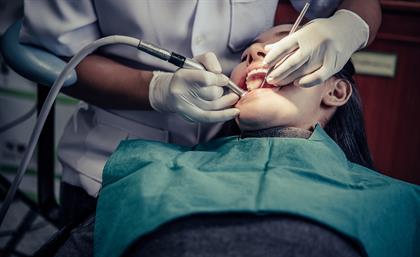
A women wellness exam is more than just a routine doctor visit—it's a powerful preventive tool that helps women stay in control of their physical, reproductive, hormonal, and emotional health. Whether you're entering adulthood, planning a pregnancy, approaching menopause, or maintaining long-term well-being, these exams offer insights that support every stage of a woman’s life.
This comprehensive guide explains what a women’s wellness exam includes, why it’s important, recommended tests by age, and how often you should get examined. If you want to take charge of your health, understanding the value of these exams is the first step.
What Is a Women’s Wellness Exam?
A women’s wellness exam is an annual preventive checkup designed to evaluate your overall health. It focuses on reproductive health, breast health, hormonal changes, vital organ function, mental health, and risk factors for chronic illness.
A typical wellness exam includes:
A general physical examination
Breast examination
Pelvic exam
Pap smear or HPV testing
Blood work
Hormone evaluation (if needed)
STD screening
Mental health and lifestyle review
The goal is simple—detect issues early, track health changes, and empower women with personalized medical guidance.
Why Women’s Wellness Exams Are Important
Women experience unique biological changes throughout their lives—puberty, pregnancy, postpartum, perimenopause, menopause, and aging. A wellness exam helps monitor these transitions, ensuring early detection and proper management of health concerns.
1. Detects Health Conditions Early
Many conditions such as cervical cancer, breast cancer, diabetes, thyroid issues, polycystic ovary syndrome (PCOS), and heart disease develop quietly. Regular exams allow for early diagnosis, often before symptoms appear.
2. Supports Reproductive & Sexual Health
From menstrual cycle irregularities to fertility planning and contraception, wellness exams provide tailored reproductive-care support at every life stage.
3. Monitors Hormonal Balance
Hormones influence mood, weight, sleep, skin, fertility, metabolism, and mental health. A doctor may recommend hormone tests if you experience:
Fatigue
Mood swings
Irregular periods
Hot flashes
Acne or hair loss
Low libido
4. Prevents Long-Term Conditions
Routine screenings help identify risk factors for:
Heart disease
Osteoporosis
Diabetes
High cholesterol
Depression or anxiety
Taking action early prevents future complications.
5. Offers Personalized Care
A yearly exam helps your doctor understand your health patterns, lifestyle, and family history—allowing them to create a customized plan to keep you healthy.
What Happens During a Women’s Wellness Exam?
Many women feel nervous before their first exam, but understanding the process makes it easier. Here’s a breakdown of what you can expect.
1. Health History Review
Your doctor begins by discussing:
Past medical issues
Family health conditions
Menstrual cycle
Pregnancy history
Birth control use
Sexual and reproductive concerns
Lifestyle habits (diet, stress, sleep, exercise)
This helps determine which tests or screenings are necessary.
2. General Physical Examination
This includes checking:
Height and weight
Blood pressure
Heart rate
Lungs
Abdomen
Thyroid gland
Skin and lymph nodes
These basic measurements give insight into your cardiovascular and metabolic health.
3. Breast Examination
A breast exam checks for:
Lumps
Tenderness
Skin changes
Nipple discharge
Your provider may teach you how to perform a self-breast exam monthly. Depending on age and risk factors, a mammogram may be scheduled.
4. Pelvic Examination
A pelvic exam evaluates:
Vagina
Cervix
Uterus
Ovaries
This exam may include:
External inspection
Speculum exam
Internal manual exam
It helps detect infections, cysts, fibroids, reproductive abnormalities, and pelvic pain causes.
5. Pap Smear & HPV Testing
A Pap smear screens for cervical cancer. Guidelines typically recommend:
Ages 21–29: Pap test every 3 years
Ages 30–65: Pap + HPV co-test every 5 years
If abnormalities are found, your doctor will guide you on follow-up steps.
6. Blood Tests
Blood work may include:
Complete blood count (CBC)
Cholesterol levels
Thyroid panel
Blood sugar levels
Vitamin D and B12
Hormone levels (estradiol, progesterone, testosterone, FSH, LH)
These tests reveal hidden issues like anemia, diabetes, hormone imbalance, and thyroid problems.
7. STD Screening
If you're sexually active, testing may be recommended for STDs such as:
Chlamydia
Gonorrhea
Syphilis
HIV
Hepatitis B and C
Many infections show no symptoms, making screening essential.
8. Mental Health Assessment
Your provider may ask about:
Anxiety
Depression
Stress levels
Sleep problems
Mental health is a crucial part of overall wellness.
9. Lifestyle & Wellness Counseling
You may receive personalized advice on:
Diet and nutrition
Exercise
Weight management
Fertility planning
Birth control
Menopause support
Stress management
This ensures a whole-body approach to women’s health.
Recommended Screenings by Age
Women have different health priorities at each stage of life. Here’s what doctors typically suggest:
Ages 13–18
General health evaluation
Menstrual health review
HPV vaccination
Mental health assessment
Guidance on safe habits and nutrition
No pelvic exam is required unless there are symptoms.
Ages 19–29
Annual wellness exam
Pap smear every 3 years (starting at 21)
Breast exam
STD testing
Birth control counseling
Ages 30–39
Annual wellness exam
Pap + HPV co-testing every 5 years
Hormone evaluation (if needed)
Thyroid testing
Preconception planning
Breast cancer risk assessment
Ages 40–49
Annual exam
Mammogram starting at 40 (or earlier for high-risk women)
Blood sugar and cholesterol testing
Perimenopause counseling
Ages 50–64
Annual exam
Menopause care
Bone density scan
Colon cancer screening
Cardiovascular health testing
65+
Continued pelvic and breast exams
Bone health monitoring
Chronic disease management
Mental health and fall-risk evaluation
How Often Should You Get a Women’s Wellness Exam?
Most doctors recommend getting a women’s wellness exam every year. However, some screenings occur less frequently depending on age and results.
You may need more frequent visits if you:
Have irregular periods
Experience severe pelvic or breast pain
Notice lumps or unusual bleeding
Have chronic medical conditions
Are planning pregnancy or having fertility issues
Are experiencing menopause symptoms
Consistency helps ensure long-term wellness and early problem detection.
How to Prepare for Your Exam
To make your visit smooth and stress-free:
Avoid intercourse 24 hours before a Pap test
Don’t schedule the exam during your period
Bring a list of medications
Wear comfortable clothing
Write down your symptoms or questions
Share concerns openly and honestly
Common Myths About Women’s Wellness Exams
Myth 1: You only need an exam if something is wrong.
Reality: Preventive exams catch problems before symptoms appear.
Myth 2: Wellness exams are painful.
Reality: They may feel slightly uncomfortable, but they shouldn’t hurt.
Myth 3: If you’re not sexually active, you don’t need the exam.
Reality: Many women’s health issues occur regardless of sexual history.
Benefits of Staying Consistent With Wellness Exams
Regular women’s wellness exams offer many long-term benefits:
Early disease detection
Healthy pregnancies
Better hormonal balance
Reduced risk of chronic conditions
Improved mental health
Stronger immune system
Increased confidence in your health decisions
Your annual exam becomes a powerful foundation for a lifetime of wellness.
Final Thoughts
A women’s wellness exam is essential for every woman, regardless of age or symptoms. It’s a proactive step that protects your physical, mental, and reproductive health. With personalized screenings, early detection, and professional guidance, these exams help you stay healthy and empowered at every stage of life.
Whether you’re preparing for your first exam or staying on track with annual checkups, prioritizing your wellness today leads to a healthier tomorrow.
Leave a Reply
You Might Like Also

Top Benefits of Working With a Dual Diagnosis Therapist for Recovery

Oral Food Challenge Procedure: How It Works, Risks & Expected Results

Tooth Extraction Healing Process: From Day 1 to Full Recovery

Affordable and Quality Dental Services at Marietta Dental Care

The Science Behind the Best Time to Get Your Flu Shot











